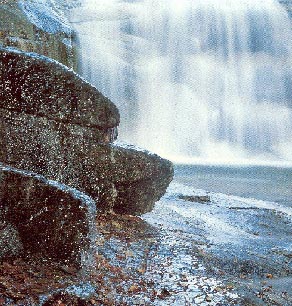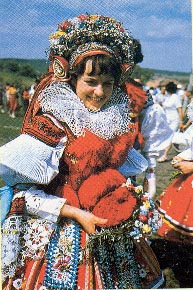Fact about Czech republic...
The former state of Czechoslovakia, now divided into the Czech Republik and the Slowak Republik,
was a land-locked country extending from west to east in eastern Central Europe, surrounded by
Germany in west, Poland along its whole northern frontier, the Ukraine in the east, Hungary to the
south-east and Austria to the south.
The Czech Republik (the former Imperial Crown Lands of Bohemia and Moravia together with small parts
of Silesia) has an area of 78,864 sq. km/30,449 sq. miles, representing 61.66 % of the area of former
Czecho-slovakia. The Slovak Republik (Slovakia) has an area of 49,036 sq.km/18,933 sq.miles (38.34%).
The total area of the former Czech and Slovak Federative Republic (ÈSFR) was 127,900 sq.km /49,400 sq.miles.
The former ÈSFR extended for some 765/475miles from east to west, with a greatest width from north
to south of some 275 km/170miles in Bohemia and 80km/50miles in eastern Slovakia.
The total lenght of the frontiers of the ÈSFR was 3553km/2208miles - 1391km/864 miles with Poland
(39.1%), 815km/506miles with Germany (23%), 679km/422miles with Hungary (19.1%), 570km/354miles with
Austria (16%) and 98km/61miles with Ukraine (2.8%).
The total lenght of the frontier of Czech Republic is 2290,2km/1431miles - 761,8 km/476,1miles with
Poland, 810,3km/506,4miles with Germany, 466,3km/291,4miles with Austria and 251,8km/157,3miles with
Slovakia.

The territory of the Czechs and Slovaks lies in the zone of transition between the oceanic climate
of Central Europe and the continental climate of Eastern Europe. In consequence the weather pattern
varies from west to east. Regional differences in climate derive mainly from two factors, situation
and relief. Situated as it is the western part of the Czech/Slovak territory, Bohemia has a sub-oceanic
climate similar to that of Southern Germany. Its characteristics are:
mild to moderately cold winters, with mean temperatures in the coldest month (January) of about - 1°C
to -2°C (30-28°F)
moderatelly warm to warm summers, with mean temperatures in the warmest month (July) of about 18-19°C
(64-66°F)
a growing period of over 200 days annual and daily variations in temperature in crease from west to
east,
as the number of "summer days" (i.e.days with maximum temperatures over 25°C/77°F) and days with
frost and ice (with minimum and maximum temperatures below 0°C/32°F) on average temperature falls with
increasing altitude at the rate of 0.63°C/1.1°F per 100metres in summer.
Population


From the creation of the first Czechoslovak state in 1918 Czechoslovakia, in spite of its definition
as the "state of Czech and Slovaks", was a multional state inhabited not only by Czech and Slovaks but
also by many Germans, Hungarians, Ukrinians, Russians and Poles as well as other small minorities.
In 1997 had Czech Republik a total population of some 10.318.958 inhabitants (94.4% Czechs and
3.1% Slovaks, together with 0.5% Germans, 0.6% Poles and 0.3% Romanies (gipsies).
This produced a population density of 123 to the sq. km (319 to the sq. miles). The average rate
of population increase between 1980 and 1990 was 0.2%, life expectancy just under 70, the illiteracy
rate under 1%.
The official languages are Czech and Slovak, two closely related Western Slav languages. In
addition Hungarian, Polish are spoken in the areas occupied by these minorities, who have a right to be
taught in their mother language. In these areas signs and notices are often bilingual. Many of the older
generation still speak German; among younger people English is more commonly understood.
Religion
Since from 1950 onwards there werw no official statistics on the religious affiliations of the
population no reliable figures are available. Most believers (an estimated 5 million in 1991) belong
to the Roman Catholic church. A long behind come the Czechoslovak Hussite (Catholic) church and various
Protestant denominations (Lutherans, Presbyterians, Reformed Church), and Orthodox church, as well as
Baptist, Bohemian Brethren, Moravian Brethern and Methodists. The number of Jews is estimated 10 000.
Last stat. Research (1997):
Roman Catholics - 39.2%
Atheisten - 39,7% (!!!)
Protestantants - 4.1%
Orthodox church - 3%
Jews, other rel. incl. rel. from Asia - 13.2%
home
|
